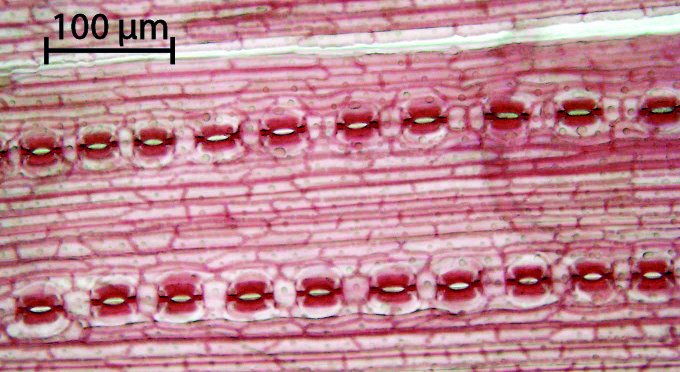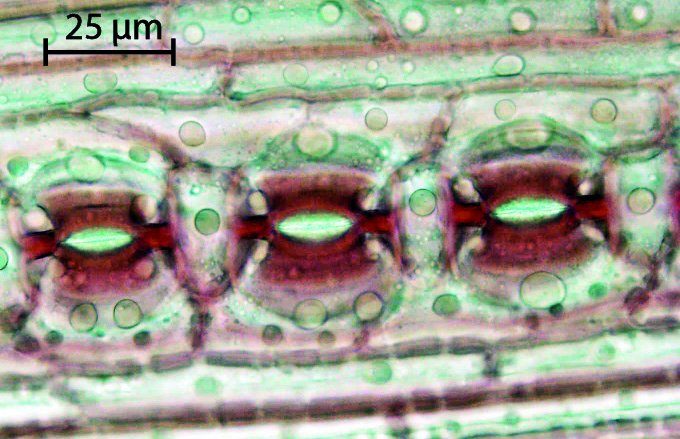The mathematics of plants

Environmental scientists at Utrecht University have concluded that plants adhere to mathematical rules. The number, size and shape of the stomata in leaves abides by mathematical scaling relationships ensuring that the leaf surface is used as efficiently as possible for the absorption of CO2 and the evaporation of water. The study was recently published in the online journal New Phytologist.
Although plant leaves vary greatly in shape and size, their function is almost always the same: absorbing light and CO2 for photosynthesis and supplying water for transpiration. The surface of the leaves must be porous for the absorption of CO2 and water. For this purpose leaves have small pores on the surface, the stomata (see photos below).


Small is better
Geoscientist Hugo de Boer investigates how plants can adapt their photosynthesis and evaporation to climate change and rising CO2 concentrations. “To a large extent, the combination of the size, number and shape of the stomata determines how much CO2 a leaf can absorb and how much water is evaporated. Unraveling the general relationships between these features will help us to more accurately estimate how much CO2 plants can absorb and how much water evaporates on a global scale”, he says. “We have analysed more than a thousand plant species and have found that the combination of the size, number and shape of the stomata is explained by two simple principles. Firstly, based on the evolutionary history of plants, it appears that the amount of CO2 and water vapour that dissipates through the leaf surface is increased. This allows plants to be more productive and more resistant to conditions that require considerable evaporation.”
“And secondly, it is the leaf surface that is reduced in the evolution of the stomata", De Boer continues. "Although this seems contradictory, it is possible because plants cleverly combine an increase in the number of stomata with a decrease in size. Smaller stomata are less deep and can therefore absorb more CO2 and water vapour than large stomata.”
Plants cleverly combine an increase in the number of stomata with a decrease in size.
Smart plants
De Boer and his colleagues based their conclusions on two mathematical scaling relations. Both the number and the size of the stomata and the size of the cells around the stomata (see photo) and the size of the pores should be in relation to each other.
The combination of these scaling relations determines whether or not the leaf surface is efficient for stomata. With mathematical models, the researchers made a prediction on which combination of features are the smartest, most efficient and that increase both the permeability of the surface for CO2 and water vapour for the total area of the stomata. They then mapped and compared the evolutionary development of stomata with the most clever theoretical combination of properties.
In the analysis, the researchers focussed on angiosperms. This group of plants is characterised by the high density of very small stomata. This combination of properties makes the most efficient use of the available surface area of the leaf, which has contributed to the evolutionary success of this group of plants.
Publication
Hugo J. de Boer, Charles A. Price, Friederike Wagner-Cremer, Stefan C. Dekker, Peter J. Franks, Erik J. Veneklaas, Optimal allocation of leaf epidermal area for gas exchange, New Phytologist, DOI: 10.1111/nph.13929
Sustainability at Utrecht University
By combining its expertise in the field of sustainability, Utrecht University develops integrated solutions for sustainability issues contributing to a better future for following generations. This theme connects Utrecht’s excellent sustainability research from the humanities, sciences and social sciences with a focus on water, energy and a healthy environment. Sustainability is one of the four strategic research themes at Utrecht University.
More information on the research theme Sustainability

